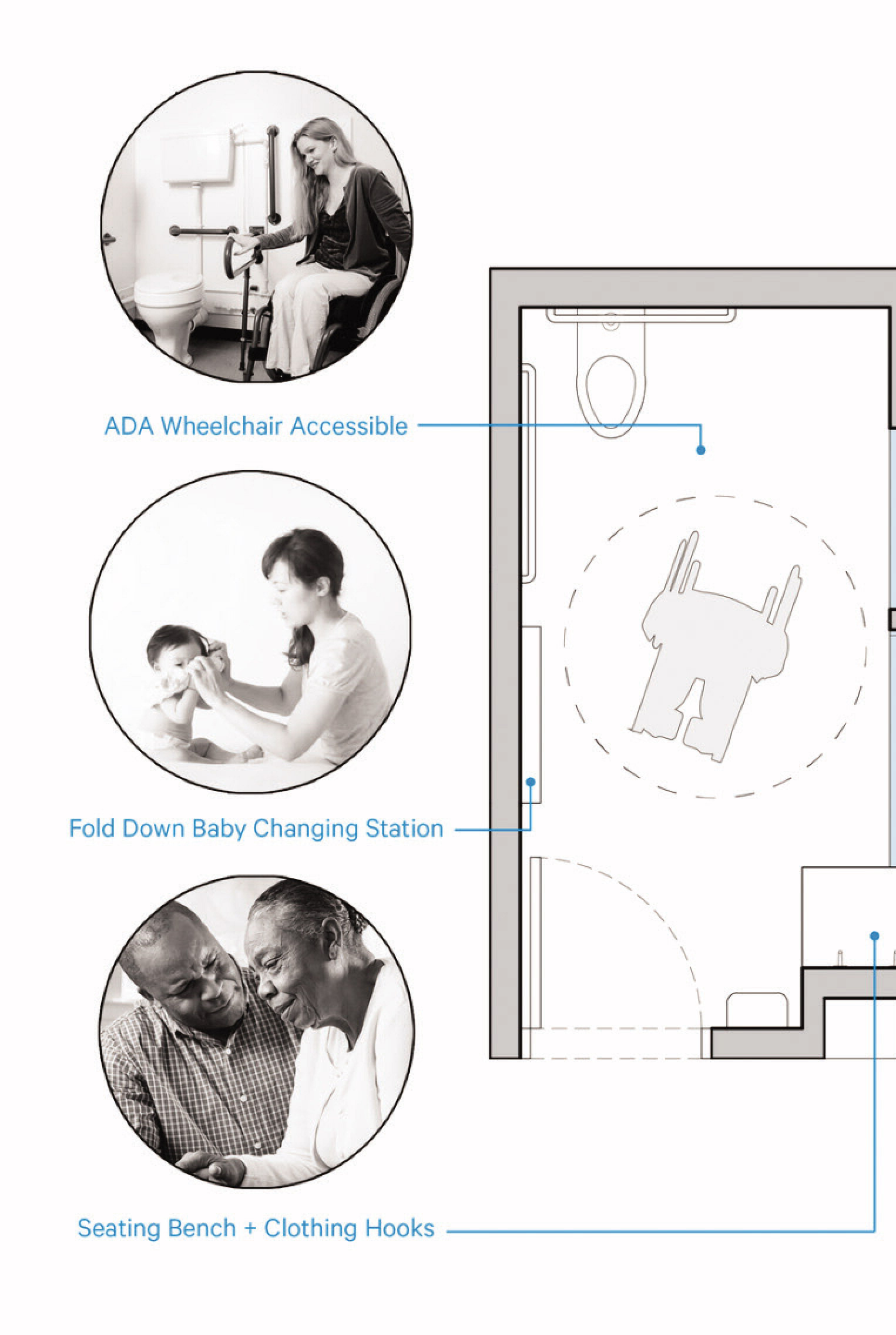
One of the design principles that came out of my collaboration with Joel Sanders and Terry Kogan was a greater appreciation of how all built spaces encode uninterrogated “imaginaries” regarding who is or is not thought to be among those who will enter or occupy those spaces. As such, built environments and designed spaces become fraught sites for encountering the implicit norms and hierarchies built into the social order—everything from the imagined size of the person sitting in the airplane seat to whether a user can walk through a door rather than wheel up a ramp. Looking specifically at the design of public restrooms, starting from the current controversy about sex-segregated spaces and access for trans and gender-nonconforming people, really brought into sharp focus how a seemingly narrow problem affecting few people is actually enmeshed with some very fundamental questions about how design can enforce beliefs and practices regarding who counts as a member of the body politic and notions of equity and equality in the public sphere. It clearly links transness and gender-nonconformity to related questions of race and disability that also impinge on injustices related to bodily difference. At root, what we see is that our society is “bio-centric,” using bodily differences of many kinds (skin, genitals, size, limbs) to sort and rank people in ways that create greater or less capacities for living.
Continue Reading:






